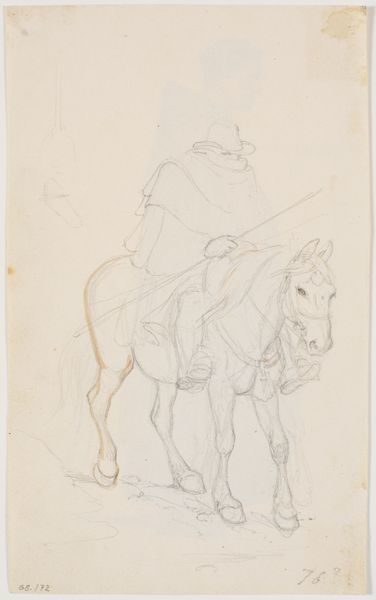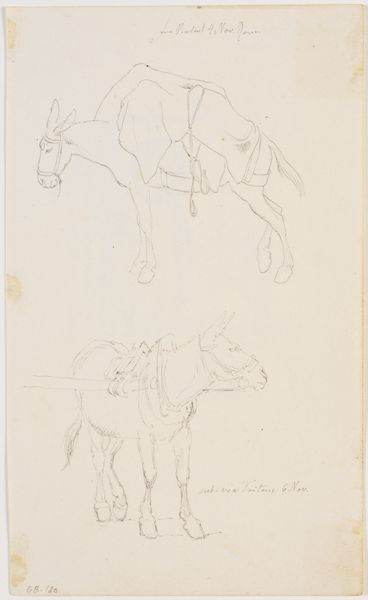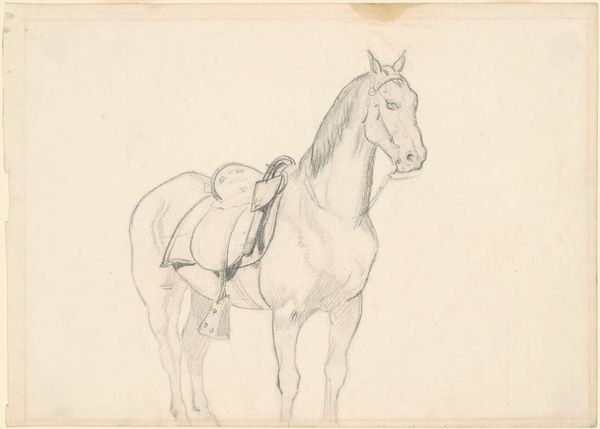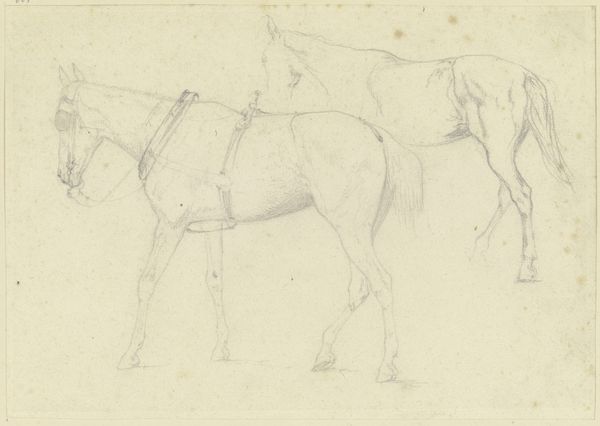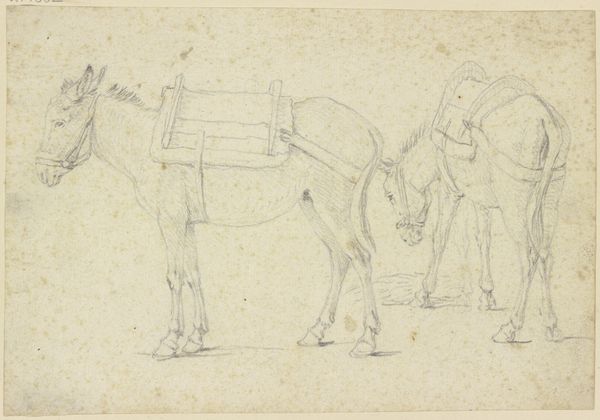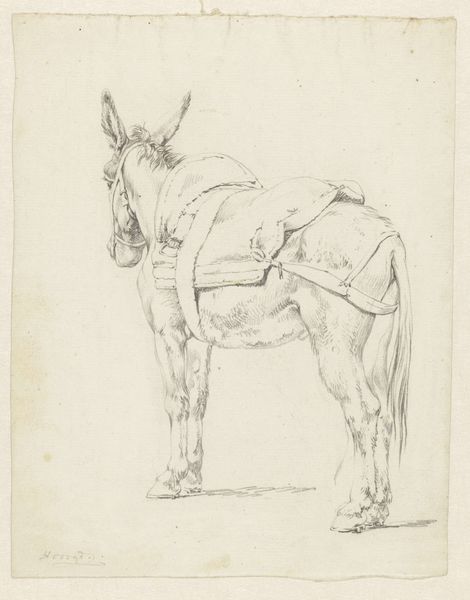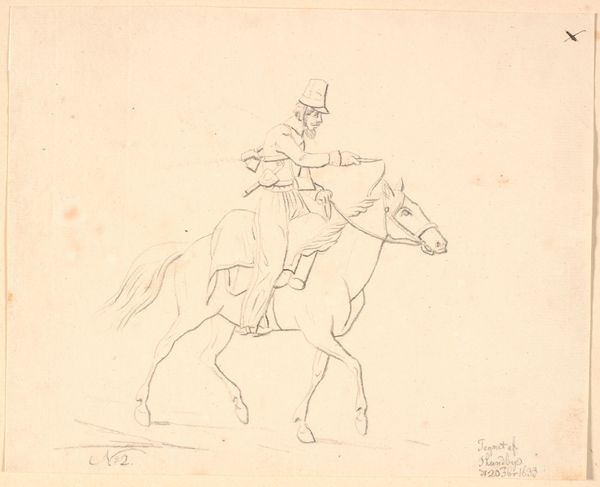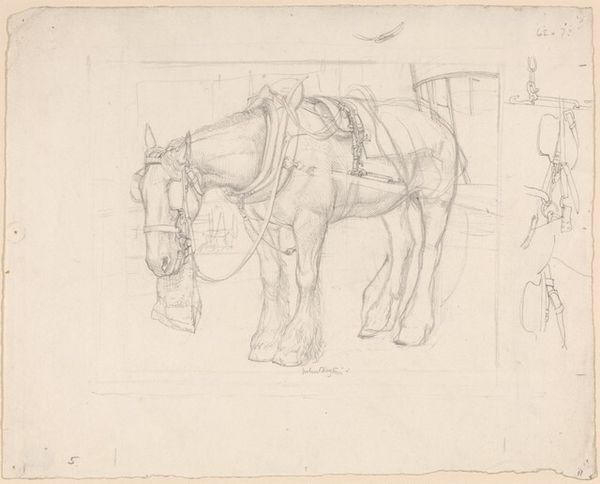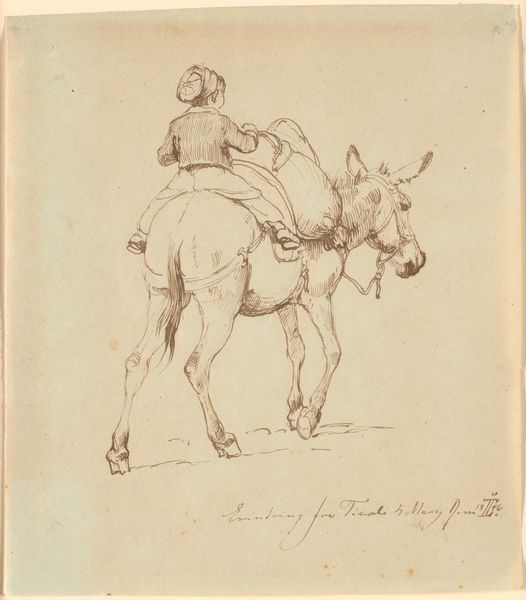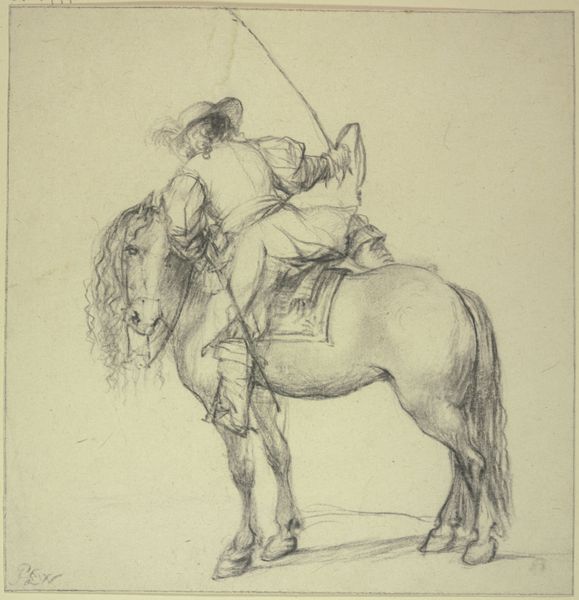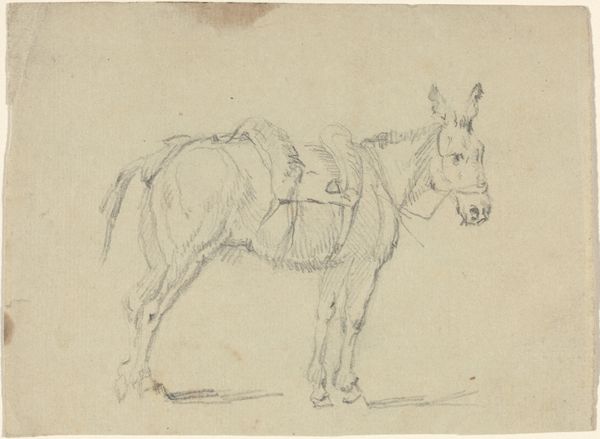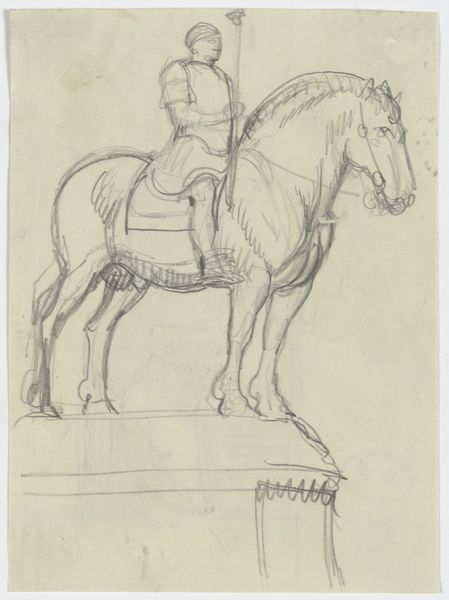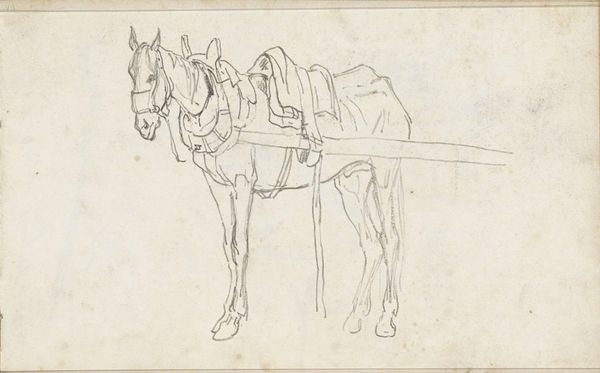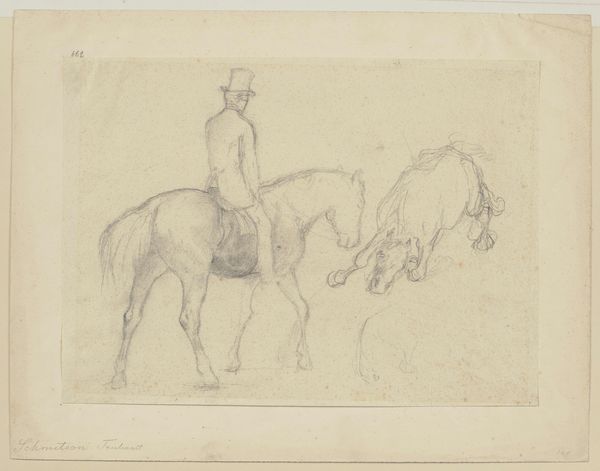
drawing, pencil
#
drawing
#
pencil sketch
#
landscape
#
pencil
#
academic-art
#
realism
Dimensions: 203 mm (height) x 184 mm (width) (bladmaal)
Curator: This drawing by Johan Thomas Lundbye, created in 1845, is titled "Two Horses with Packs." It is currently held at the SMK, the National Gallery of Denmark. Editor: What strikes me immediately is how delicate and unassuming it is, almost ghostly with its light pencil strokes. It captures such a quiet moment, burdened but serene. Curator: Absolutely. Lundbye was deeply interested in capturing the Danish landscape and the everyday life within it. This work exemplifies the Realist movement in his dedication to portraying subjects he observed firsthand. His landscape art was rooted in this need for national definition, identity, and pride. Editor: And the weight of those packs on their backs, they are very neatly defined. Notice how the harnesses, crafted of coarse material, look practically new and serve as a clear reminder of the animal’s role. Curator: That’s a good point. During the 19th century, the representation of working animals, even in studies like this, reflects a specific perspective on labor and utility of horses in society. Landowners or even wealthy merchants needed sturdy draft animals like these to convey merchandise between destinations. Editor: Yes, you’re quite right! By focusing on these pack animals in their working roles, the art acknowledges the production and means by which ordinary lives were lived. I wonder how the drawing might’ve differed if he sketched a team pulling a carriage in Copenhagen instead. Curator: Most definitely. Furthermore, sketches like these provide crucial insight into the working methods of 19th-century artists and the academic standards expected of them, offering both artistic and social context. It is like looking behind the scenes. Editor: Precisely, viewing such unassuming artifacts yields greater awareness of the time's historical background and its prevalent aesthetic sensibilities. It is wonderful how a fleeting study speaks of labor, class, and place. Curator: I concur entirely, it demonstrates how the careful study of an artwork yields broader cultural narratives to be brought to light.
Comments
No comments
Be the first to comment and join the conversation on the ultimate creative platform.
